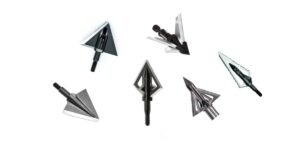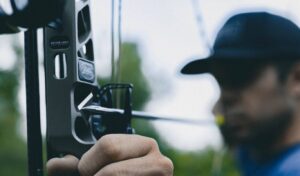If you’re just getting started in archery, there’s a whole world of new technical terms and jargon to get your head around.
One thing that often confuses beginners is tiller and the idea that it can be positive, negative, or neutral.
Essentially, tiller height refers to the horizontal distance between the limb nearest to the limb fitting and the string.
A positive tiller is when the distance from the bottom limb of the bow to the bowstring is slightly smaller than the distance from the top limb to the bowstring.
A negative tiller, therefore, means that the gap is bigger at the bottom and a neutral tiller means the gap is equal at the top and bottom.
In this guide, we’ll cover everything you need to know about tiller heights and how they can affect your archery!
Contents (Jump to Topic)
ToggleHow Is Bow Tiller Calculated?
So, we’ve established how you measure the tiller of a bow, but this measurement is only ever given as a single figure, rather than two different numbers.
How can this be the case when we take measurements from two different bow parts?
The answer is pretty simple.
The figure we need is the difference between the measurements at both ends of the grip.
Here’s a simple formula you can use to work out the tiller on your own bow:
Distance at upper limb – Distance at lower limb = Overall tiller measurement
Therefore, the resulting tiller can either be a positive number, a negative number, or zero.
If the result is zero, the distance between each limb joint and string is the same and the bow is pretty much perfectly symmetrical.
If the result is a positive number, the upper limb is higher up the bow than the lower limb.
This means that a negative tiller value equals the lower limb being higher than the upper limb.
How Does Bow Tiller Affect Archery?

So, now that we understand what tiller is and how to measure it on our bows, let’s examine how this measurement affects how we shoot.
When the tiller is not at a neutral value, it means that one of the limbs is storing more energy and effectively working harder than the other one.
This energy imbalance can then be transferred into the arrow when shot.
An even more detrimental effect of poor tillering is that both limbs will finish the shot cycle at different times.
This makes the nocking point of the shot unstable and can cause the arrow to be deflected when fired.
As well as noticing inaccurate shots, improper tiller exhibits itself through noise.
Experienced archers can hear if a bow is not tillered correctly and even inexperienced archers will notice that their shots sound different from how they normally should.
What Is The Correct Tiller Measurement?
Based on what we’ve just learned in the previous section, you’d assume that the perfect tiler measurement is zero, right?
While a tiller value of zero isn’t bad, the ideal window is between 0 mm and 12 mm.
Different archers have different preferences, so everyone will have their ideal level of tiller.
If you shoot “three under” or “stringwalk,” you don´t need a positive tiller!
However, it should be remembered that a particularly high or low tiller value is often a bad way to go, and keeping yours close to zero will be most effective.
For beginners, a tiller of 4 mm on a recurve bow is a good place to start.
Practice with various tiller points to find what works best for you, and keep these measurements in mind for when you use other bows in the future.
How To Adjust Bow Tiller
Finally, it’s time to look at how to adjust the tiller of your bow.
This process is a lot simpler than most beginners might think and there’s certainly no need to take your bow to a professional to help you do it.
Here’s the most common way of adjusting the tiller of your bow:
- Start by measuring the current tiller value of your bow. This is important because you need to know which specific measurements work best for your style to help you find the best point.
- Then, unscrew the bolt on the back of the riser. Almost all recurve bows will have a bolt that locks the tiller in a fixed position.
- Next, adjust the tiller using a hex key or whatever key is provided with the bow. There will most commonly be a hex screw somewhere in the tiller head. You can twist this screw in either direction to adjust the tiller level.
- Finally, tighten the locking bolts to lock the tiller back into place. You have to ensure everything is tightly secured back into place so your carefully adjusted tiller doesn’t unwind while you’re shooting.
Final Thoughts
So there you have it; that’s everything you need to know about what a positive tiller is!
As we said before, there’s no such thing as the perfect tiller measurement for every archer, and a positive tiller might not even be the right one for you.
However, as long as you practice with various measurements and stick to our method, you should be able to find the level that works for you!







